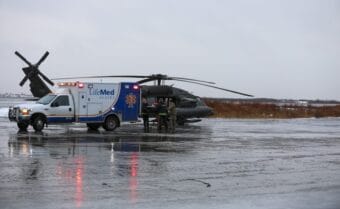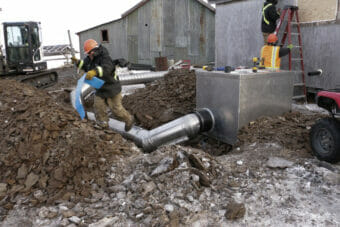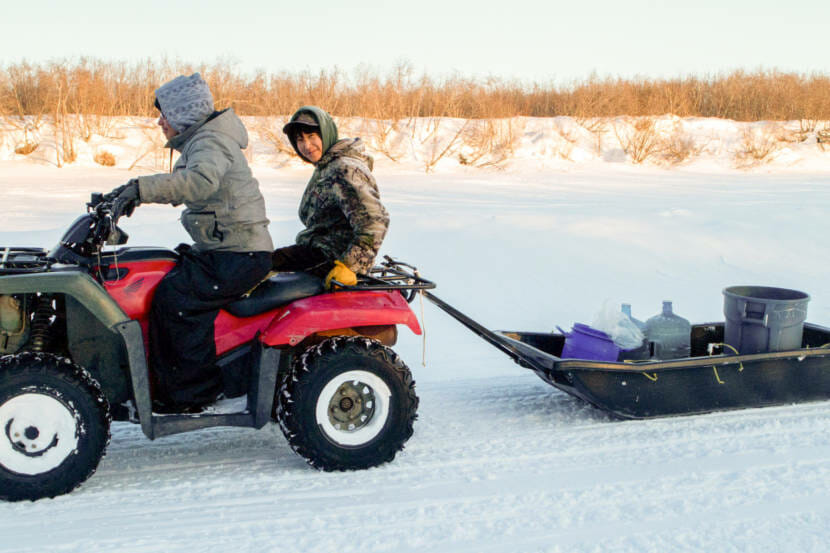
After a fire destroyed Tuluksak’s water plant in January 2021, Tuluksak residents have developed several different drinking water options. Each comes with its own pros and cons. Residents’ choices depend on what they trust — and what they have the means to access.
If you live in Tuluksak, you can pack water from a hole in the frozen Kuskokwim River, which is about 2 miles from town. You’ll need a vehicle, and if that’s a snowmachine or a four-wheeler, you’ll need a sled. You’ll need to be careful of wolves, too, as they’ve been spotted near the village lately. Plan for about a 45-minute round trip, and bring an ice pick.
But Henry Peter’s ice pick had gone missing, so he had to gamble on an open hole.
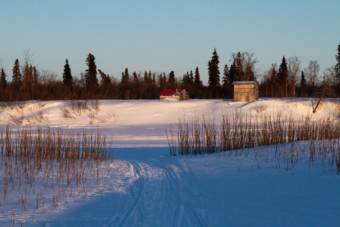
“I’m quite fortunate,” he said. “Somebody was there before me.”
Peter was packing water after his shift at the store.
“At least twice a week of hauling water back and forth,” Peter said.
He always packs enough for his household of five, and usually enough extra water for another family. Tonight he’s hauling 40 to 50 gallons. Peter goes down to the Kuskokwim River rather than the Tuluksak River, which is closer to town. He doesn’t trust water from the Tuluksak.
“I personally did get sick from drinking it before,” he said.
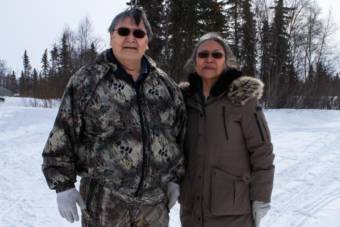
Elders Peter and Elena Gregory don’t trust the Tuluksak River water, either.
“We won’t drink that water,” said Peter Gregory.
“Because of the mines up there that made it, like, really coffee with milk,” Elena said.
Elena is talking about the Nyac mine, a former gold mine that sits at the source of a main Tuluksak tributary. The Alaska Department of Environmental Conservation has said that the river water is safe to drink when boiled, but most Tuluksak residents say that it makes them sick.
Even so, residents without vehicles had to get water from the nearby Tuluksak River after the water plant burned down. The Kuskokwim River was too far away to carry water on foot.
During spring breakup, the Gregorys might also have to resort to packing Tuluksak River water because ice floes will likely make the Kuskokwim too dangerous. In the summer, they’ll drink rainwater. The couple prefers natural water sources. They don’t trust water treated with chemicals, like the water from the Tuluksak school, where the Yukon-Kuskokwim Health Corporation installed a temporary water plant in early March.
Tuluksak resident Jera Peter doesn’t mind the school water.
“Granted, it smells like chlorine, but it’s better than drinking out of the river,” he said.
Jera Peter helped install the temporary water plant. He said he was lucky to get the work after he lost his job when the washeteria burned down. The temporary plant pipes water up from the Tuluksak River, and some residents are skeptical of it.
“It’s good enough to drink, even if I have to boil it,” he said.
Most people boil the water they get from the school. They say it’s brown and that once it settles, there’s a layer of sediment on the bottom.
The temporary water plant is housed in the shop area of the school and is only open for about six hours each day. That means people who work late, like Henry Peter, can’t access it most days.
YKHC Director of the Office of Environmental Health and Engineering Brian Lefferts says the brownness of the water was likely because the operators weren’t changing the filters often enough. Lefferts says he talked to the operators about it in mid-April.
“Since they’ve changed those, it’s making good, clear water again,” Lefferts said.
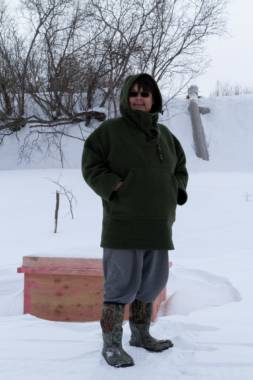
Lefferts also says that sediment in the river usually increases in the spring, so filters may have to be changed more often.
When breakup comes, they’ll have to pull the system out of the river, wait for the ice to clear, and then reinstall it on a floating dock.
Lefferts said that’s an annual process for these systems.
“And that’s pretty typical for anybody that uses an intake system out in the river,” he said.
The community will have to prepare by filling their water storage tanks. They have a few thousand gallons of water storage available to them, which could carry them through a couple weeks.
There’s one other option for getting water in Tuluksak. Residents can pick up donated bottled water from the Tuluksak Native Community office, when it’s open. But the supply is dwindling. The tribe has requested bottled water from the State of Alaska to carry them through breakup. Bottled water is also available at the store for around $60 per case.
Tuluksak was hoping to have a more reliable water source by now — a portable water plant from YKHC. It would provide more water in a more central location, but the plant is still sitting in Bethel because it was too heavy for the ice road this winter. For a brief period, the National Guard thought that they might be able to deliver it using a similar helicopter to the one that removed the “Into the Wild” bus, but it proved too heavy even for that.
The new plant is expected to be barged up in June. Installation would likely be finished in late summer.

